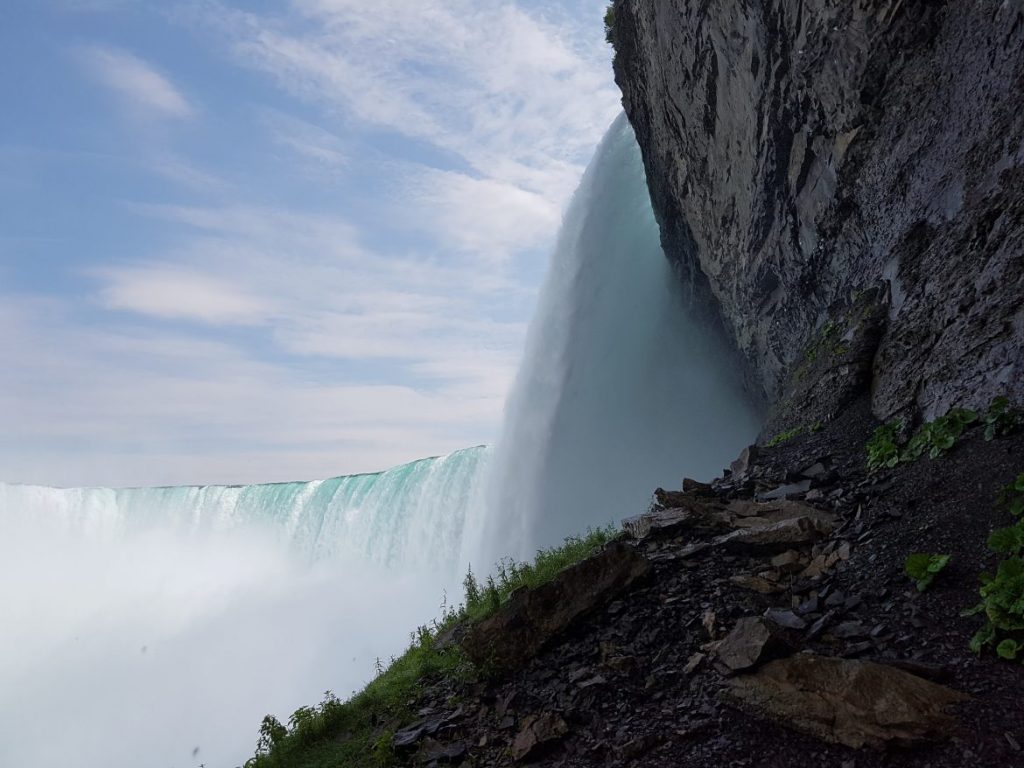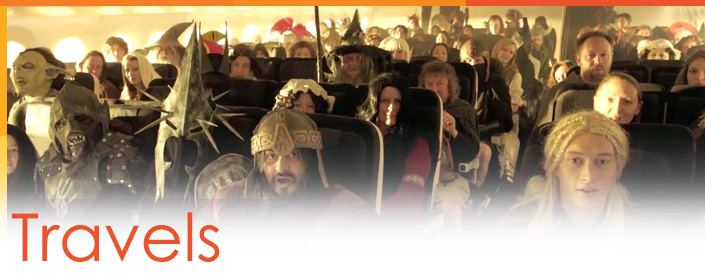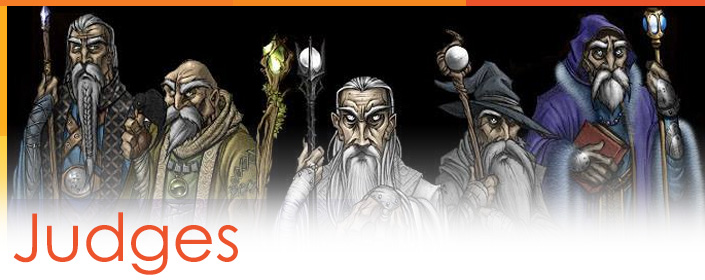
How to start a Limited GP
CIAO to everybody!
We are jumping back and forth in time, and today we will be travelling to Canada for the Eldritch Moon sealed GP Montreal.
Every time a new set is released, the week after its release, there are Sealed Deck GPs on at least two continents (that weekend had Sydney in Australia, Stockholm in Europe, and Montreal in North America) where tons and tons of new boosters will be opened.
One of the crucial aspects of huge events like Grand Prix is to start on time; while the length of each round will depend on how fast the format is and on individual matches that may have problems, the beginning of the Grand Prix is a complex logistical moment, which, if not well prepared, may cause long delays (have I ever told you that I participated in only one Grand Prix, in 2004, which had something like MORE THAN TWO HOURS of delay at the beginning of the event, exactly because of lack of logistics preparation?).
At GP Montreal, I was assigned the lead of the logistical preparation, and I would like to share with you the system I used; you may reuse it for your Sealed Deck tournaments, or you may get some aspects and apply them to many other logistics challenges.
Then, after a weekend of work, we will take advantage from the opportunity given by judging Magic events all around the world, renting a car and exploring the Canadian rivers and forests!
Happy reading.
Tournament Operations: Logistics Team – Sealed Deck
1) WHAT Needs to Be Done?
The goal is to distribute all objects to all players.
Six boosters.
One decklist.
Basic lands.
Promo card and other goodies.
One waiver.
2) WHEN Does It Need to Be Done?
The “player meeting” at Grand Prix events begins at 9:00.
The current system is that, between 8:30 and 8:45, the seatings (in random order) are posted on the walls or on a series of pairing boards (sorted in alphabetical order), and players find their table.
The distribution of all objects cannot happen BEFORE 9:00, and the reason is simple: tables are used by all players waiting for the beginning of operations.
We may anticipate the operations by bringing big boxes next to the rows of tables, but the distribution has to happen AFTER players are seated (estimate: 9:00 to 9:05; it can go up to 9:15 in case there are significant issues).

Important note: the more we anticipate, the faster and the smoother the process goes.
Why should this process be fast? Because people are just waiting for the distribution to finish, as they want to start building and playing… and waiting when nothing happens is very boring.
Pro tip: while the judges distribute all objects, the head judge should keep them busy with general information and recommendations… and it will seem that the distribution happened instantly.

3) IN WHICH ORDER Do the Objects Need to Be Distributed?
PART 1: during the head judge’s welcome speech.
One waiver: each participant needs to fill out and sign a liability release form (or “some bureaucracy paper I have little information about”, which is how I like to call those papers ^__^). This is the only paper that needs to be collected too, so it’s better to distribute it immediately, so that all players will fill it out quickly when the head judge will give them the detailed instructions. Important note: have many pens ready, there will always be people without them.
Six boosters: they are used to build the decks. The six boosters can be distributed while players fill out the waiver forms; the boosters have the advantage of being small enough and there will surely be space on the table, even if everybody is filling out the forms.
One decklist: each participant need to have his pool registered and to register his own deck. If the decklists are distributed BEFORE players start opening the boosters, it will be much easier.
This is the end of the first part of the distribution; players will now be asked by the head judge to open their boosters, to register the pool of the person in front of them, to get their cards back, and to get ready to build their decks. For more information about the current process for pool registration, you can read “Jim Carrey’s Sealed Deck in GP Beijing 2015”.
PART 2: during pool registration, after cleaning up all the booster wraps.
Promo card: each year, a new commemorative promotional card is created, and each participant of a Grand Prix has to be given one. The end of pool registration is usually a good moment for these to be distributed, as the center of the table is usually not full with cards (pool registration needs much less space than building) and it’s next to impossible that the promo card will be forgotten on the table or mixed with tokens or lands or wraps.
Playmats/Tokens/Other goodies: several tournament organizers offer goodies, these vary from playmats to deck boxes, from sleeves to dice, from pens to tokens…; sometimes, they get distributed to each player, sometimes they are collected individually at the Customer Service desk; sometimes players are given a voucher during the pool registration / deck building, and can then go individually to the Customer Service desk to redeem all goodies. Each tournament organizer has his favorite system. Exactly like for the promo card, the best moment to distribute all goodies (especially if they are of significant dimensions) is the end of the pool registration.
Basic lands: to be added to cards opened in the boosters, to create the deck. Basic lands are needed only at the end of the deckbuilding, so they are the last item to be distributed (but there is no reason not to distribute them earlier); basic lands are usually available in sealed packs of 80 (16 per type), and one pack is usually enough for four players; as table tents have two table numbers, which means four players, “one basic land pack per table tent” is very easy to remember and distribute.
4) PLANNING: The Material For Each Judge / Each Row
Let’s take a closer look at one of the cases we saw earlier

Let’s analyze this photo:
At the bottom: “121 to 140”. This case has everything that is needed for 40 players, which is the 20 tables from table 121 to table 140
In the center: you can see two boxes with boosters, and there are three others below them, for a total of five; each box contains eight sets of six boosters each (IMPORTANT note: do you see some blue tape on one of the sets? Yes, we put tape on one side of each set of six boosters, to make it more difficult to exchange boosters, in case some people with low ethic would want to bring fake boosters from home!).
On the left: decklists, divided into two piles of 20; one pile is vertical, one pile is horizontal (at GP Montreal, we had rows of ten tables, each case served two rows, and the two piles of decklists were for the two rows).
On the right: waivers; exactly like decklists, two piles of 20.
Not visible: lands; each judge had ten packs of lands (it was two “Land Stations”, which are boxes with five packs of 80 lands; each “Land Station” can serve 20 players, which, by coincidence, was one exact row at GP Montreal).
Not visible: promo cards and other goodies. In the specific case of GP Montreal, we had vouchers in a sleeve with the Stoneforge Mystic promo (one sleeve per player) and my choice was to have only four judges distribute all promos + vouchers to the entire room.
5) PLANNING: Position of Judges / Row Assignments
You may have noticed in the previous photo that there was a name on the case.
I’ll explain the reason with another photo, which has been distributed to each judge:

This is a very simple map, created with Excel (which has the advantage of automatically recalculating numbers, in case of single changes in any area of the room, like removing one row in any place).
Around the playing tables, there is an approximate indication of other stages around, to help people orient themselves.
Colors are used to indicate how the entire area is divided into local areas; names indicate who takes care of every operation in each area. You may also notice that small areas are coupled; this very small aspect is indeed quite important, as it’s a visible way to indicate judges to focus on their neighbors and actively help people who might be slower.
Conclusions
This is one of the possible systems to make Logistics at a Sealed Deck work, and start a Limited GP very smoothly. Each of us has a different way of thinking and a different way of approaching logistics activities; be prepared to adapt to different people’s systems, or feel free to take my system and modify it to your preferences!
Grand Prix Montreal 2016
Montreal is the most populous city in Quebec, the huge Canadian province in eastern Canada, where there is a predominantly French-speaking population.

My favorite place to visit in Montreal is Old Montreal, a fascinating quarter of the city with beautiful architecture and plenty of restaurants and pubs to enjoy the evening!

Here you have a short video to get a glimpse of the city:
Let’s have a tourn…. Holiday!
You were not expecting tales about Emrakul and the Planeswalkers and their fights, right?
You can find many interesting stories on the Magic Story website, and then filter by “Column” and by “Magic Story”.
The story I would like to tell you today is about four friends renting a car and visiting rivers, islands, lakes, and parks during a warm Canadian summer.
This story will be told with a few pictures, with brief descriptions; the rest, I would like to leave it to your imagination… just think about taking some of your good friends and organize a 1000 kilometers road trip in the countryside with them.
Montreal, an old city that has become modern.

A piece of the… wall of Berlin?!?

The usual breakfast

Saint Lawrence river and its “1000 islands”

Planning the week in the park

A close encounter with a wild animal… in a display case 😉

A small barbecue

A beautiful landscape

An awesome city hall (in Toronto)

The gigantic Niagara Falls

An adventure in the parks

Great Judges of the World: Carlos Ho
Carlos Ho is one of the most known Magic judges; originally from Panama, he spent a dozen of years in Spain, and life now brought him back to Panama, from where he keeps travelling to enjoy life and judge international tournaments, dedicating a lot of time to the development of the Latin American community and to the most remote areas of the world.
Carlos was the head judge of GP Montreal.

Goodbye Montreal
… and another awesome adventure has come to an end.
Goodbye Montreal, goodbye Canadian region where people speak French, goodbye Canadian islands and forests… I’m confident we will meet again next year!

I hope you enjoyed this article, and I’m looking forward to reading your comments.
If you want to add a comment and discuss this article in the Judge forums, click HERE.
All comments, feedback and advice are very welcome 🙂



